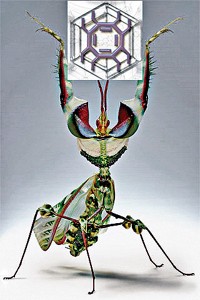Advertisement
Grab your lab coat. Let's get started
Welcome!
Welcome!
Create an account below to get 6 C&EN articles per month, receive newsletters and more - all free.
It seems this is your first time logging in online. Please enter the following information to continue.
As an ACS member you automatically get access to this site. All we need is few more details to create your reading experience.
Not you? Sign in with a different account.
Not you? Sign in with a different account.
ERROR 1
ERROR 1
ERROR 2
ERROR 2
ERROR 2
ERROR 2
ERROR 2
Password and Confirm password must match.
If you have an ACS member number, please enter it here so we can link this account to your membership. (optional)
ERROR 2
ACS values your privacy. By submitting your information, you are gaining access to C&EN and subscribing to our weekly newsletter. We use the information you provide to make your reading experience better, and we will never sell your data to third party members.
Jyllian Kemsley’s article “The Digital Data Dive” (C&EN, Aug. 10/17, page 14) leaves out some very important evolutionary history relative to the electronic storage of, and access to, Chemical Abstracts (CA). Chemical Abstracts Service (CAS) started capturing all the data for its printed product on magnetic tapes in 1967, sending these to its printer as the basis for photocomposing the printed product. At the same time, it made these tapes (minus the abstracts) available to subscribers, such as chemical companies, who wrote computer programs to search them using punched cards to input the search parameters.
But there were two companies, in the mid-1960s, who had developed generalized database management systems (DBMSs) that operated under multiuser, time-sharing access—for example, IBM’s time-sharing option (TSO) through dial-up modems. One company was Lockheed Missiles & Space Co., which had developed a system ultimately named DIALOG and which the National Aeronautics & Space Administration had contracted to provide access to its Scientific & Technical Aerospace Reports (STAR) database for its contractors. The other was System Development Corp., a spin-off from Rand Corp., which had developed a system ultimately named ORBIT and which the National Library of Medicine had contracted to provide access to its Index Medicus database (subsequently known as Medline and now the primary component of PubMed).
These two companies recognized that there were many other databases becoming available, to which their DBMSs could be readily applied. Consequently, they became aggregators of hundreds of databases, including CA, which thousands of academic institutions and companies subscribed to through their internal libraries. From 1970–79, these two companies revolutionized access to the information that knowledge workers need to perform their work.
But the subscribers to the CA database through these two companies increasingly demanded that access to CA must include the abstracts themselves, not just the metadata of bibliographic information and index terms. In response to this demand, in 1984, CAS launched its STN International system, accessible through its STN Express software. The Internet was not yet universally available, so CAS offered it under dial-up modem access also.
The STN Express software functions on a command-line interface based on direct application of Boolean logic, as do DIALOG and ORBIT. This interface provides for definition of very sophisticated logical relationships among search terms, scaling up to tens or hundreds of search terms, when necessary. When properly applied, this interface results in realistic numbers of retrieved “hits,” having a high degree of relevance to the desired subject. Because of this precision, STN Express is still the preferred interface of professional literature researchers.
Deanna Morrow Hall
Stone Mountain, Ga.




Join the conversation
Contact the reporter
Submit a Letter to the Editor for publication
Engage with us on Twitter